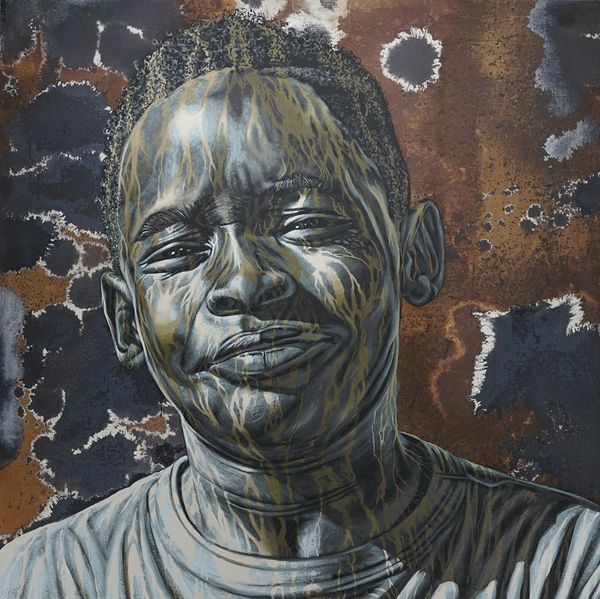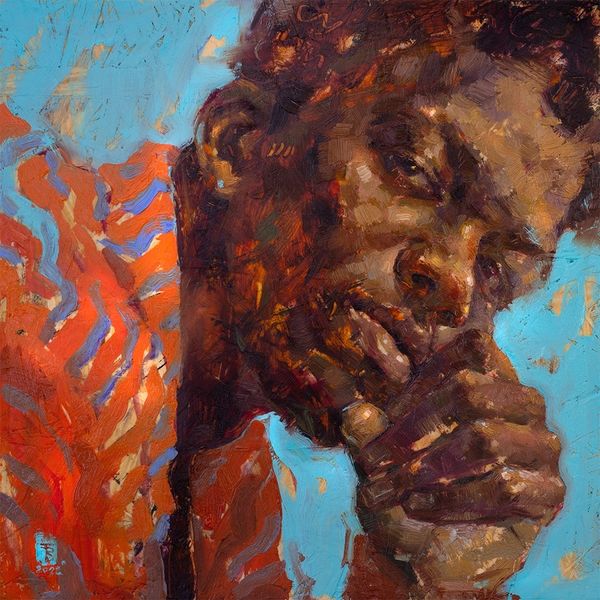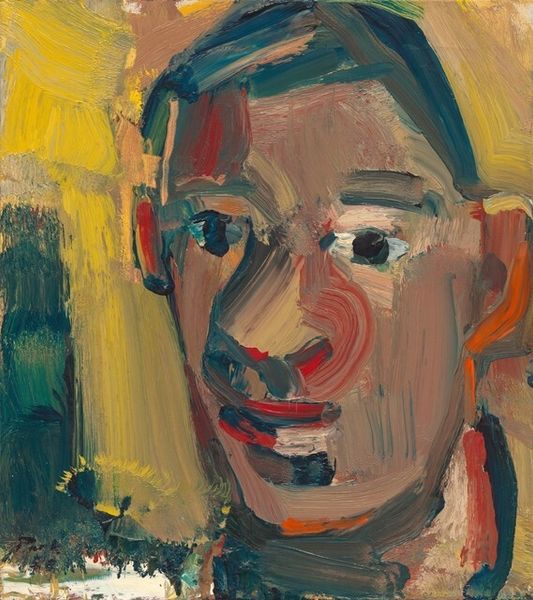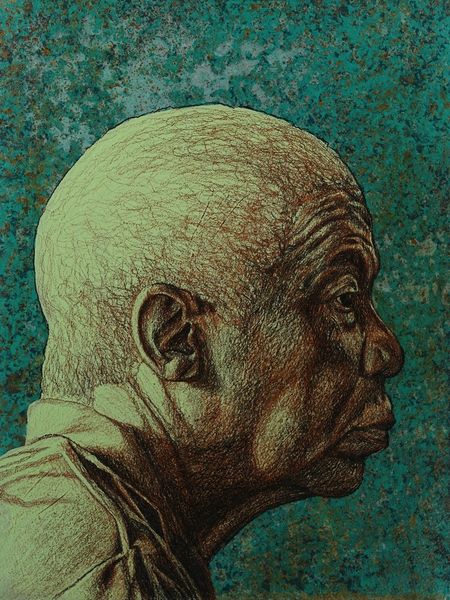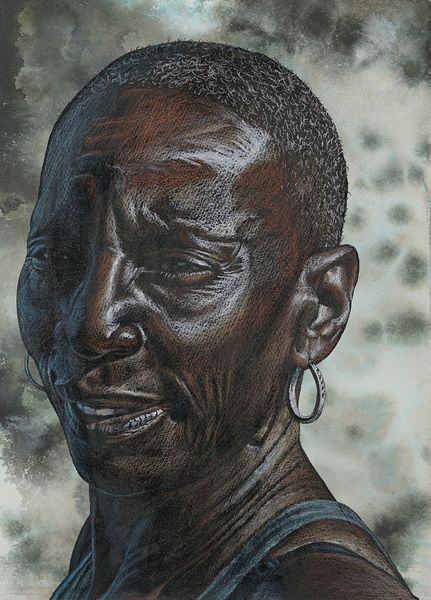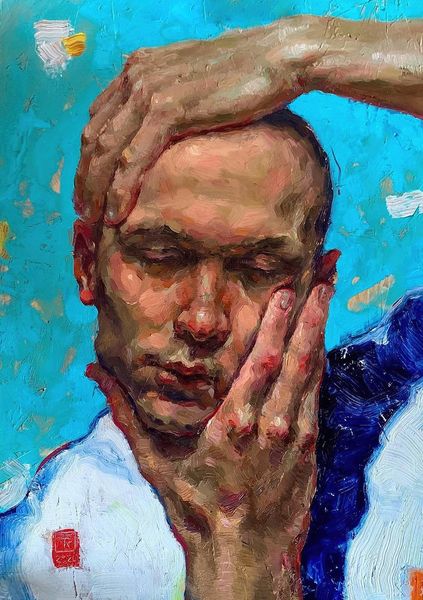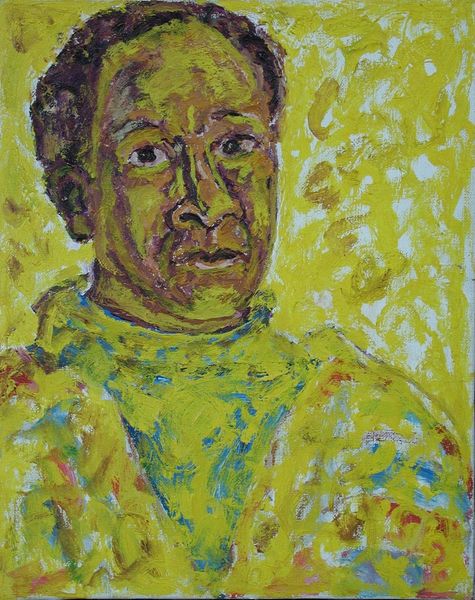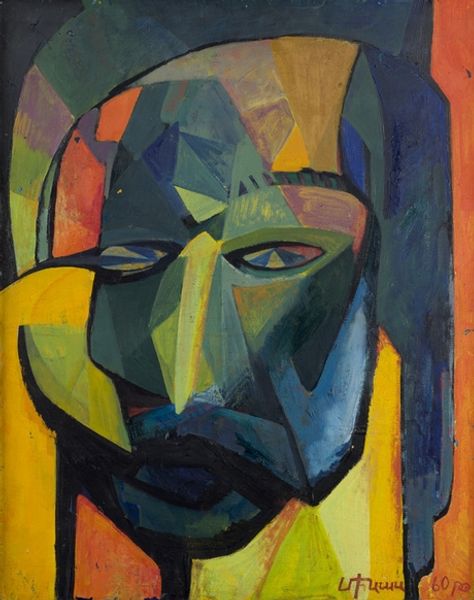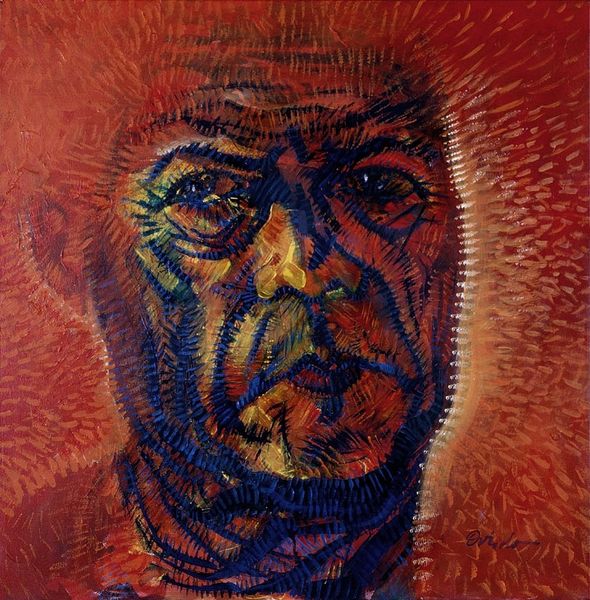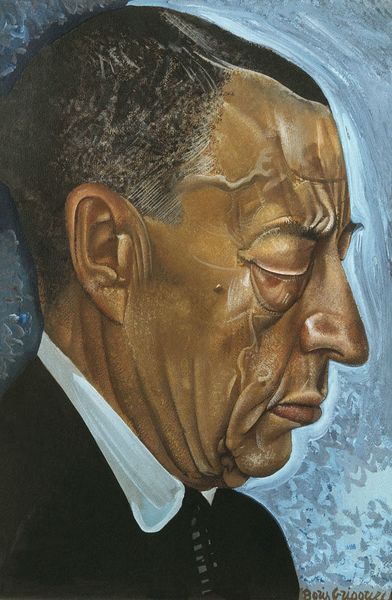
painting, oil-paint
#
portrait
#
figurative
#
painting
#
oil-paint
#
figuration
#
oil painting
#
realism
Copyright: Modern Artists: Artvee
Curator: Timur Akhriev, a painter working in the figurative and portrait styles, created this oil-on-canvas work entitled "Poet I." Editor: There's an immediacy about it, isn't there? A sense of the subject almost being caught in a moment of profound thought, underscored by that deep, almost overwhelming blue. Curator: Indeed. I find Akhriev's choice of subject matter fascinating in the context of representation within art history. The identity and the very existence of "the poet" become a point of consideration here. How are we reading his identity into this portrait? Editor: The blue certainly sets a tone; the figure almost emerges from it, and I feel there's a symbolic resonance, too, as though he's being born from this creative atmosphere. Thinkers have used the color blue as an intellectual symbol going back thousands of years. It evokes contemplation, maybe even melancholy. Curator: And there's also a directness in the gaze that challenges the viewer, positioning us to consider power dynamics embedded in portraiture, a genre traditionally reserved for elites. Here, Akhriev presents us with…a poet, a thinker, a creator. Editor: I see the weight of intellect mirrored in the brushstrokes, they’re raw, unfinished. And there's something about the overall impression that evokes ancient portraits in places like the Fayum...do you feel like this man's features speak of an ethnicity and identity for which there are not well-worn paths of expression? Curator: Yes, exactly, especially as the title calls him merely a “Poet," while we see someone with dark skin: it raises essential questions. The universality of artistic expression versus lived experience… who gets to create, who is encouraged to, and who is remembered for it? Editor: What do you think? Is there any chance that bold, intentional ambiguity speaks most profoundly of universal inspiration and expression? Perhaps that deep blue backdrop symbolizes both that intellectual legacy and an erasure, allowing for new futures, too. Curator: Perhaps. In any case, thinking about Akhriev’s “Poet I” through these intersectional lenses allows us to engage critically with portraiture and the socio-political weight art carries within broader cultural narratives. Editor: For me, lingering on this image gives us cause to examine the role and symbolic language behind portraiture—to see these echoes as living representations. I feel as though his features are the result of a dialogue between many centuries.
Comments
No comments
Be the first to comment and join the conversation on the ultimate creative platform.


